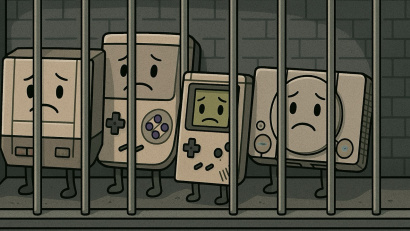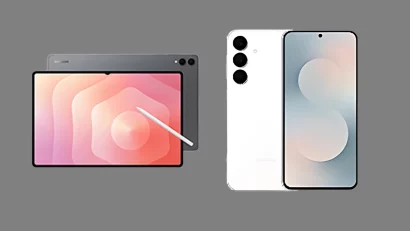Filip Majkić
Intervju: Martin Rajli, HP
Kompanija HP se zaista može podičiti vrhunskim kadrom, a u prilog toj tvrdnji najbolje može da posluži neko kao Martin Rajli. Njegova funkcija je Enterprise Storage, Servers & Networking Marketing Manager, za EMEA (Europe, Middle East and Africa) region. Martin je u HP-u proveo više od 32 godine u Programme Management, Customer Services i Technical Education odeljenjima, između ostalih. Prvih 10 godina u IT industriji je proveo na razvoju sistema i softverskog treninga za korisnike i inženjere u prvim godinama OpenVMS-a. Nakon uspešne karijere u domenu edukcije, nastavio je u odeljenju za odnose sa korisnicima u Enterprise sektoru.
Tokom devedesetih, vodio je marketinški partnerski Data Centre Partners program u Velikoj Britaniji za Alpha servere i kasnije HP9000/HP Integrity servere. Istovremeno, nadgledao je uspešnu integraciju ovih odeljenja nakon spajanja kompanija HP i Compaq. Njegova nova odgovornost jeste marketing program za Cloud i Blade servere za HP Enterprise Storage, Server and Networking odeljenje u EMEA regionu. Svoje obrazovanje je stekao u Velikoj Britaniji. Diplomirao je kao aeronautički inženjer.
Benchmark: Gospodine Rajli, kako biste sumirali HP strategiju u domenu servera i uopšte približili našim čitaocima prednosti Konvergentne infrastrukturu?
Martin Rajli: Konvergencija je strategija za naše servere, ali ne samo servere. Pokušavamo da spojimo ono najbolje iz naše istorije servere. Ako pogledate 21 godinu postojanja ProLiant servera, imao je ogroman uspeh zahvaljujući standardizaciji i našim naporima da uzbramo standardizaciju. Sa druge strane, u Blade serverima možete videti ProLiant DNK, ali i objedinjenost sa menadžmentom, veoma bitnim aspektom konvergentnih sistema. Opet, menadžment konvergentnih sistema je potekao sa naših Integrity servera, odnosno naših UNIX servera. U uslovima virtualizovanih okruženja, na čemu se Blade serveri sve više baziraju, kao i sa blade i cloud matricama, možete videti temelje koji se zasnivaju na UNIX okruženjima. Strategija je non-stop uzimati i objedinjivati ono najbolje i unapređivati okruženja, sisteme.
Naš cilj je da omogućimo menadžment svih tih servera kao jednog entiteta. Kompletno okruženje, bez obzira šta se “ispod” nalazi, potrošnju, sve zajedničke stvari gradimo na zajedničkim temeljima i principima automatizacije. Zajednički temelji donose bolje rezultate, jer sada više IT menadžeri ne moraju da brinu o stakovima, kompletna infrastruktura je sada zajednička.
Benchmark: Praktično, IT menadžeri ne trebaju da brinu o hardveru ili kompatibilnosti?
Martin Rajli: Apsolutno, otišli smo veoma, veoma daleko od hardvera, hardver se stara o sebi. IT menadžeri sada mogu da brinu kako da implementiraju i koriste poslovne aplikacije i da razmišljaju o cloud-u, ali infrastruktura je nešto što koriste i što mogu da koriste u manjoj ili većoj meri, u zavisnosti od potreba i sve je automatizovano.
Na taj način unapređujemo i efikasnost i omogućavamo stvaranje dodatne vrednosti za same kompanije. Sve se vrti oko posla. Serveri su tu sada da zarade novac kompaniji, a to se ostvaruje tako što serveri pokreću aplikacije koje su bitne za posao, odnosno razvoj i unapređenje posla. Serveri više nisu trošak i svrha samima sebi. Što više zajedničkih temelja, to niži troškovi, jer sve manje mislite na hardver, rezervne delove i slično, a sve više o tome kako i na koje načine da ga uposlite. Troškove smanjujemo kroz standardizaciju.
Benchmark: U Srbiji je često problem u tome što donosioci odluka smatraju servere, čak i čitavu IT infrastrukturu čistim troškom, ili nekom vrstom slepog koloseka, umesto prilikom i investicijom. Da li imate problema sa tim i u vašoj zemlji, koja je daleko razvijenija? Ako ste ih rešili, kako ste to uspeli, edukacijom ili nekim drugim putem?
Martin Rajli: Taj odgovor nije jednoznačan. Deo je u edukaciji, ali je isto tako deo u vremenu potrebnom da prođe da bi se promene prihvatile. Isto tako, značajan deo u promeni shvatanja čine uslovi koje stvara sama sredina. Recimo, cena nafte je trenutno na najvišem nivou ikada, a sećam se i ekonomskih kriza krajem sedamdesetih, štrajkova, problema koji su tada britansku ekonomiju bacali na kolena. Međutim, pametne kompanije su sve te probleme posmatrale kao svoju šansu. Telekomunikacioni operateri danas koriste cloud kao mehanizam mrežnog saobraćaja, što donosi prihode. Gde je Amazon bio pre 20 godina? Taj posao nije postojao. Pametne kompanije će videti internet i cloud kao priliku. Cloud je tu, među nama, postoji i postojaće sve dok bude predstavljao najefikasniji način isporuke određenih dobara i usluga, a da on to jeste, potvrđuje ekonomski bum koji se ostvaruje kroz cloud.
Cloud je prilika, a ne trošak. Stoga je IT prilika da se ta prilika iskoristi, i ne treba ga posmatrati kao trošak. Sve to pod uslovom da se IT koristi na pravi način, naravno.
Benchmark: Da li bi telekomunikacioni provajderi mogli odigrati ključnu ulogu u podsticanju prihvatanja cloud tehnologije u Srbiji, imajući u vidu iskustva sa drugih tržišta?
Martin Rajli: Imajući u vidu iskustva širom sveta, cloud je velika mogućnost da se stvari rade na drugačiji način, uglavnom efikasniji nego do tada. Cloud je poslovni model nove generacije. Za one koji dolaze će cloud biti nešto sasvim prirodno, biće logično poslovno okruženje i oni će hteti da rade sve iz “oblaka”. Mrežni saobraćaj je sveprisutan i telekomunikacioni provajderi, provajderi usluga, oni će biti motor razvoja i prihvatanja cloud-a. Tako je drugde u svetu, tako će biti i ovde.
Provajderi usluga su možda i najkrucijalniji u toj priči. Amazon, recimo, nije telekomunikacioni provajder. Bio sam u Rumuniji pre nekoliko nedelja i tamo sam upoznao momka koji nudi hosting usluge iz Rumunije u drugim zemljama. Svetska ekonomija se potpuno redefiniše, a nekadašnje granice više ne postoje, makar ne u onom smislu u kom su postojale decenijama i vekovima. Sve se prepliće, povezuje, usluge se iz zemlje A pružaju u zemlji B, a na njih se oslanjaju usluge iz zemlje C i tako dalje. Pobednici će biti oni koji budu bili najbolji u odnosu cene i efikasnosti prilikom isporučivanja tih usluga. Možda će zemlje kao što je Velika Britanija biti gubitnici u toj velikoj promeni. Zanimljiva stvar kod svih tih promena jeste što će velike države biti pred ništa manjim izazovom u odnosu na manje države, koje bi mogle da na različite načine iskoriste ovu priliku.
Obrazovanje je kritično. Zanimljiva je razlika između ljudi koji vode kompanije i CIO-a (Chief Information Officer, osobe zadužene da se staraju o informacijama, najčešće i IT infrastrukturi, prim. ur.), osoba koje su zadužene za srž i opstanak same kompanije i CIO-a čija se uloga definitivno menja. Ranije su oni mogli biti u nekoj vrsti kolizije protivinteresa, mogli su biti vrlo nezavisni jedni od drugih, mogli su čak i da međusobnu komunikaciju drže na minimumu. Danas u dobrim i uspešnim kompanijama oni predstavljaju ljude koji ponajviše sarađuju, CIO mora da oseća “tok vremena”, odnosno mora biti uvek svestan šta je kompaniji potrebno i kakva tehnologija može da pomogne i unapredi poslovni model kompanije.
Posao CIO-a je da omogući poslu da unapredi prihode. To je možda oduvek bilo tako, ali mislim da je danas to još izraženije i evidentnije, sa problemima u svetskoj ekonomiji i tako dalje. Dok biznismeni pokušavaju da nešto urade, CIO od pre deset godina bi ih kočio, dok bi današnji CIO bio izvor ideja, izvor efikasnog postavljanja infrastrukture, idejni predvodnik načina na koji bi IT mogao da donese novac kompanijama. Njegov posao je da kaže: “Za tu i tu uslugu mogu da vam obezbedim infrastrukturu u roku od tri nedelje, a preporučujem još i …” Sada sve funkcioniše na osnovu partnerstva, ako želite da imate efikasnu kompaniju, i međuljudski odnosi, i odnosi između IT odeljenja i ostatka kompanije i njene infrastrukture.
Benchmark: Videli smo informacije o Moonshot projektu (ogromna količina paralelizovanih procesora niske potrošnje). Da li mislite da bi procesori niske potrošnje (npr. ARM ili Atom procesori) mogli da postanu dominantni na serverskom tržištu u godinama koje dolaze?
Martin Rajli: Mislim da će svakako imati ogromnu ulogu, i da će ta uloga biti rastuća. Trendovi migracije govore da za određeni nivo opterećenja, za određena okruženja, takvi procesori predstavljaju pravi odgovor. Nekada davno nismo ni imali multiprocesore, već uniprocesore, pa smo uvećavali broj povezanih procesora, pa potom broj jezgara na njima, i pojavljivala se potreba za multi-thread-ovanim aplikacijama. Međutim, šta ako priroda aplikacija ne zahteva multi-thread? Na primer, za web server je to potpuni višak. Sa druge strane, može se itekako iskoristiti moć visokog stepena paralelizma, i za te potrebe ovakvi procesori predstavljaju daleko adekvatniji odgovor. Postoje mnoge primene kojima jednostavno ne treba taj po pitanju potrošnje i opterećenja veoma zahtevni multi-thread svet.
Danas se stvari dele na osnovu dva principa – negde je važnije “koliko toga imate” a negde “koliko brzo nešto može da se izvrši.” Naš princip jeste da radimo sa korisnicima na tome da li njihova aplikacija jeste ono pravo, da li može da se učini pogodnom za paralelnu obradu. Na osnovu toga se bira najpogodnija infrastruktura. Puno radimo sa kreatorima aplikacija i samim korisnicima na tome. “Kako možete da iskoristite novu kategoriju čija evolucija tek počinje,” to je najčešća tema naših razgovora.
Benchmark: Kakvo je vaše mišljenje o migraciji od hard diskova na solid state diskove? Hoće li biti značajnih promena na tom polju?
Martin Rajli: To je svakako jedno od težih pitanja. Storage prolazi kroz evoluciju. Lično, mislim da je sve u ekonomskim vodama. Cena po gigabajtu “upravlja” svime. Ako su vam troškovi najbitniji, verovatno se nećete opredeliti za SSD. Ako želite performanse, onda ćete svakako želeti SSD. Dakle, imamo zapravo troguao – troškovi, gigabajti, performanse. U tom “troškovi po gigabajtu po performansama” svetu će biti prostora za nova rešenja.
Recimo, sa našim 3PAR storage rešenjima, postoji mogućnost potpunog podešavanja putem polisa. Recimo, ovaj podatak je najvažniji, smesti ga na SSD jer ga želim momentalno čim ga zatražim. Ako se taj podatak ne koristi tokom izvesnog vremena, onda u skladu sa polisom automatski ga izmesti sa SSD-a na HDD – i to, možda, na brze hard diskove (10,000 RPM). Potom, ako i dalje nije krucijalan, premesti ga na sporiji HDD (5400 RPM) velikog kapaciteta. Tako da na taj način prilagodite storage u skladu sa tipom podataka služeći se polisama koje sami određujete. Sa starim konceptom storage-a, morali ste imati armiju administratora koji bi se starali o podacima i ručno ih prilagođavali. Danas jednostavno podesite polisu i sve se radi automatski. Želimo da forsiramo filozofiju “plaćanje po gigabajtu po važnosti podataka”, a ne samo “po gigabajtu”, jer tu omogućavamo uštede našim korisnicima, kao i za opremu. Optimizacija storage-a će biti ključan faktor u narednom periodu, naročito sa ovako dramatičnim rastom količine digitalnih informacija.
Benchmark: Tokom svoje prezentacije ste naglašavali važnost edukacije, spominjući HP ExpertOne program, namenjen ne samo partnerima, već prevashodno biznis klijentima. Kako biste ocenili informisanost vaših klijenata i njihovu svest o cloud-u?
Martin Rajli: Svi znaju za termin cloud. Dosta manje ljudi ga zaista razume. Mislim da je glavni pokazatelj toga pitanje “Koja je vaša definicija cloud-a”, koje često postavljaju. Mislim da je potraga za preciznom definicijom cloud-a promašena poenta.
Benchmark: Posebno nam deluje neverovatno da niko od prisutnih, koji dolaze iz više desetina preduzeća, i koji bi trebali da naprave nekakav iskorak, donesu odluku, po pravilu – nemaju šta da pitaju. To primećujemo u kontinuitetu, ne samo na nekoliko prezentacija.
Martin Rajli: Naravno, ima više razloga. Neki su kulturološki, određene osobe se srame da postavljaju pitanja jer misle da se time dovodi u pitanje integritet osobe koja drži prezentaciju. Drugi razlog je taj što nisu zaista sigurni u validnost svog pitanja, što je pokazatelj da ne razumeju baš sasvim o čemu se zapravo radi. U jednoj od vama susednih zemalja sam bio informisan da me sigurno niko ništa neće pitati jer prosto ljudi ne postavljaju pitanja.
Cloud, da budem iskren, nije do kraja definisan pojam, pre svega zato što se menja, usavršava, u pitanju je proces, na koji se permanentno utiče i koji permanentno utiče na druge. To otežava preciznu i egzaktnu definiciju, jer bi se ona razlikovala danas i pre, recimo, samo godinu dana. Ali ono što je najbitnije jeste da je to metod isporučivanja aplikacije kao poslovnog servisa umesto izgrađivanja servera, storidža, mreže, bez previše razmišljanja o tome kako ih uposliti. Cloud je strategija kako učiniti nešto, i uticaj cloud-a je više nego vidljiv. Na to bi se trebalo fokusirati, umesto na egzaktno i ultra-precizno definisanje pojma, koji će kroz par meseci ionako biti dopunjen, jer smatram da je to mašenje poente.
Isporučivanje servisa putem interneta, to je sasvim dovoljna definicija. Sasvim dovoljna da poslovne osobe počnu da se zapitaju “Kako da naš servis dođe do što više ljudi”, “Kako da iskoristim ovo za povećanje prihoda”, “Koliko je nešto dostupno”, “Kakve aplikacije mogu da razvijem”, “Da li korisnicima treba ovakva usluga i koliko to može da se naplati”. Ako ljudi ne postavljaju pitanja, to sugeriše da nisu sasvim sigurni ne u definiciju cloud-a, već u to šta cloud može učiniti za njih. Što pre se odmaknu od pitanja “šta je” o počnu da razmišljaju o tome “kako iskoristiti i unaprediti”, tim bolje za njih. Edukacija bi trebala da se fokusira na to šta cloud može da učini za biznis. To je i moja poruka – razmišljajte kako iskoristiti cloud u poslovnom smislu, umesto razmišljanja o tehničkoj definiciji cloud-a.
Benchmark: Koja vam pitanja partneri i klijenti najčešće postavljaju?
Martin Rajli: “Je li ovo iko ikada uradio?” “Može li se to uraditi?” “Da li to zaista možete da učinite ili mi samo prikazujete slajdove?” To su pitanja koja dobijamo sada već godinama. Zanimljiva je statistika propalih IT projekata. Ne mogu se setiti napamet egzaktne cifre, ali znam da je čak oko 60% IT projekata – propalo, a da uspe svega oko 40%. Kada to sagledate kao celinu, dobijete sliku ogromne količine novca koja se izgubi na neuspešne IT projekte.
Najznačajnije pitanje za mene je svakako “Da li zaista možete da uradite to što tvrdite”, jer kada vas neko pita tako nešto, to je signal da je već spreman da razmišlja na sledećem nivou, da želi da koristi tu tehnologiju, a istovremeno meni omogućava da dođem do svog omiljenog dela: “Pokazaću vam kako”. Ne meni je da mu ispred HP-a pokažem da mogu da mu isporučim cloud stack u roku od 30 dana, da mu nabavim opremu kada procenimo zajedno kakva mu oprema treba, da mogu da isporučim aplikaciju koja će unaprediti njegov biznis. Kada pričamo tako, to je prava stvar.
Benchmark: Veteran ste IT industrije, preko 30 godina radite na tehnologijama. Da li biste nam mogli dati svoju prognozu za narednih 30 godina?
Martin Rajli: Eh, kada bi to moglo tek tako… (smeh) Kada se setim vremena kada smo počinjali, tek smo počeli da pravimo otklone od biro servisa na mejnfrejmovima, tih terminala, kojima kao da se danas vraćamo, mada u sasvim drugačijim okolnostima i iz potpuno drugih razloga. Međutim, ono što je zanimljivo jeste da smo i tada dobijali pristup određenoj aplikaciji putem mreže – što je praktično cloud, samo sa drugačijim mehanizmom isporuke, a podsećam da se radi o periodu od pre više od 30 godina. Dakle, ono što smo imali u istoriji se vraća, samo pod drugim imenom i usavršenijim aspektima i mehanizmima.
Recimo, ti isti mejnfrejmovi će postojati sasvim sigurno i kroz 30 godina. Ono što ćemo videti jeste njihova postepena erozija, a upravo bi cloud mogao postati svojevrsna zamena za mejnfrejmove. Razbili smo model mejnfrejmova sa mini-kompjuterima, da bismo potom razbili model mini-kompjutera sa standardnim kompjuterima. Trendovi ne prolaze tek tako i potrebno je puno vremena da se stvore uslovi za njihovo nestajanje.
Međutim, svakako najveća prepreka davanju egzaktnije procene jeste što ne znamo kako će svet izgledati kroz 30 godina. Mislim da se mnogi poslovni zahtevi i potrebe neće puno promeniti u periodu koji je pred nama, ali će se promeniti mehanizmi isporuke i odgovora na poslovne potrebe. Na primer, možda nemogućnost drastičnog uvećavanja isporuka električne energije bude dramatično uticala na sve sutrašnjice. U Londonu trenutno ne postoji mesto za još jedan data centar, ne zbog toga što fizički nema prostora, već zbog toga što je nemoguće obezbediti adekvatno napajanje električnom energijom. Iskreno, ne mogu da verujem koliko servera svet može da koristi. Primera radi, mi isporučujemo server svakih 11 sekundi, svič svakih 17 sekundi. Koliko zapravo kompjuterske infrastrukture ovaj svet može da konzumira?
Sećam se sedamdesetih kada smo povezali dva kompjutera i izradili zajedničku logiku, čime smo efektivno kreirali jedan od prvih “višejezgarnih sistema”. Taj kompjuter je bio veličine ove sobe, stvari koje je mogao da odradi su smešne u poređenju sa današnjim ne računarima, već telefonima, i sećam se da sam se tom prilikom zapitao: “Zašto bi ikome trebala ovolika snaga, za ime sveta”. Sa velikom sigurnošću mogu samo da predvidim da ćemo raditi sve više i više, a da će naša ljudska mašta pronalaziti još razloga da radimo sve više i više. To smo videli i u proteklih 30 godina, nekada je količina kompjuterske snage ograničavala našu maštu, danas možemo da koristimo neverovatne količine kompjuterskih resursa i kad god se resursi uvećaju, naći ćemo način da ih koristimo.
Benchmark: Gospodine Rajli, hvala vam puno na izdvojenom vremenu!
During the HP Discover 2012 conference in Belgrade, with which HP marked the tenth anniversary of its operations in Serbia, we had opportunity to interview Mr. Martin Riley. More important then his long a complicated title for our audience is information that he is one of the directors who is 33 years in the company and that he is a true veteran of IT market. We talked about various things, with emphasis on cloud computing…
Filip Majkić
Interview: Martin Riley, HP
HP is a company that has extraordinary staff, and one of the best examples is Martin Riley. His function is the EMEA Marketing Manager for Enterprise Storage, Servers & Networking, (Europe, Middle East and Africa) region. Among others, Martin spent in HP more than 32 years in Program Management, Customer Services and Technical Education departments. The first 10 years in the IT industry he spent on system development and software training for users and engineers in the early years of OpenVMS. After a successful career in the field of education, he continued in thecustomer relations department in the enterprise sector.
During nineties, he led the marketing Data Centre Partners program in the UK for Alpha and laterHP9000/HPIntegrity servers. At the same time, he oversaw the successful integration of these departments after the merger of HP and Compaq. His new responsibility is the marketing program for Cloud and the HP Blade Servers for Enterprise Storage, Server and Networking Department in the EMEA region. He studied in the UK and graduated as an aeronautical engineer.
Benchmark: Mr. Riley, how would you sum up the strategy in the domain of HP servers and explain to our readers the benefits of convergent infrastructure?
Martin Riley: Convergence is a strategy for our servers, but not just for servers. We try to combine the best from our servers’history. If you look at 21 years of ProLiant servers’ existence, they had a huge success thanks to the standardization and our efforts to speed it up. On the other hand, in Blade servers you can see ProLiant DNA, and also unification with management, a very important aspect of the convergent system. Again, the management of converged systems originated from our Integrity servers, respectively our UNIX servers. In terms of virtualized environments, on which blade servers arebased, and also with the blade and cloud matrix, you can see the foundations based on UNIX environments. The strategy is to take and integrate the best of it and improve environment and systems.
Our goal is to enable management of these servers as a single entity. Complete environment, no matter what is “under the hood”, consumption, all the common things we build on common foundations and principles of automation. Common ground brings better results, because now IT managers do not have to worry about stacks, complete infrastructure is now common.
Benchmark: So, IT managers do not need to worry about hardware or compatibility?
Martin Riley: Absolutely, we went very, very far from hardware; hardware takes care of itself. IT managers can now take care how to deploy and use business applications, and to think about cloud.Infrastructure is something that they are using and something that they can usein greater or lesser extent depending on the needs and everything is automated.
In this way, we improve the efficiency and create added value for the company. It's all about business. Now servers are there to make money, and this is achieved by servers running applications that are relevant to the job, development and work improvement. Servers are no longer cost. The more common ground, to lower costs, because we less think about hardware and spare parts, and more about how and in what ways to employ it. We reduce costs through standardization.
Benchmark: In Serbia, problem is often that decision makers consider servers, even the whole IT infrastructure as a pure cost, or some kind of blind track, instead of opportunity or investment. Do you have a problem with that in your country, which is far more developed? If you resolve these issues, how you succeed, with education or in some other way?
Martin Riley: The answer is ambiguous. One part is education, but also people need some time to accept changes. Also, significant parts in changing the perception arethe conditions createdby market. For example, the price of oil is currently at the highest level ever, and I remember the economic crisis in the seventies, strikes, problems that threw British economy to its knees. However, smart companies viewed all these problems as an opportunity. Telecommunication operators are now using cloud as a mechanism of network traff/strongic, which makes money. Where Amazon was 20 years ago? That job did not exist. Smart companies will see the internet and cloud as an opportunity. Cloud is here, among us, it exists and it will existas long as it represent the most efficient way to deliver certain goods and services, and that is confirmed by the economic boom that is achieved through a cloud.
Cloud is an opportunity, not an expense. Therefore, the IT is opportunity that sould be used and should not be regarded as an expense. Of course, on condition that IT is used appropriately.
Benchmark: Could telecommunications providers play a key role in encouraging acceptance of cloud technology in Serbia, having in mind experience from other markets?
Martin Riley: Regarding experience around the world, cloud is a great opportunity to do things differently, generally more efficient than before. Cloud is the next-generation business model. For those coming, cloud will be as a matter of course, being a logical business environment and they will want to do everything from “cloud”. Network traffic is ubiquitous and telecommunications providers, service providers, they will be the engine of development and acceptance of a cloud.
Service providers are perhaps the most crucial in this story. For example, Amazon isn’t telecommunications provider. I was in Romania a few weeks ago and there I met a guy who offers hosting services from Romania in other countries. The world economy is completely redefined, former boundaries no longer exist, at least not in the sense that they existed for decades and centuries. Everything is intertwined, connected, service is provided from country A to country B, and they rely on services in the country C and so on. The winners will be those who will give best prices and efficiency in delivering those services. Perhaps countries like the United Kingdom will be the losers in this great change. An interesting thing about all these changes is that bigger countrieswill beno less challenged than the smaller states, which could, in many ways, take advantage of this opportunity.
Education is crucial. Very interesting is a difference between the people who run the companies and CIO’s, person who is in charge of the core and survival of the company and CIO whose role is definitely changing. Previously, they could be in some kind of collision of interests, they could be very independent from each other, they could even keep communication with each other at a minimum level. Today, in good and successful companies they represent people who are intensively working together, CIO has to feel the “time flow”, he must be always aware of what the company needs and which technologies can help to improve company's business model.
CIO's job is to enable working process to improve revenues. It may always be like that, but I think that today it is more obvious and evident, with problems in the world economy and so on. While managers are trying to do their work, CIO ten years ago would slow them, while today's CIO is a source of ideas, driver that will leed IT to make money for companies. His job is to say: “For this and that service I can provide you with the infrastructure within three weeks, and also I recommend …” Now everything works on the basis of partnership.
Benchmark: We saw some information regarding Moonshot. Do you think that the low-power processors (e.g. ARM or Atom processors) could become dominant in the server market in coming years?
Martin Riley: I think it will definitely have a huge role, and that this role will be growing. Migration trends indicatethat for particular load level, for certain environments, such processors are the answer. Once upon a time we did not have a multiprocessor, but uniprocesores, so we multiply number of connected processors, then the number of cores on them, and than need for multi-threaded applications appeared. However, what if nature of application does not require multi-thread? For example, for the web server its complete excess. On the other hand, power of a high levelparallelism can be used, and for those purposes these processors are far more appropriate solution. There are many applications that simply do not need this very demanding multi-threaded world.
Today things are devided on two principles – somewhere more importantly, “how much you have” somewhere “how quickly something can be done.” Our principle is to work with customers on whether their application is the right thing, whether itis suitable for parallel processing. On that basis we are selecting the most appropriate infrastructure. We work with application developers and users on these issues. “How can you use a new category whose evolution is just beginning,” it is the most common topic of our conversation.
Benchmark: What is your opinion regarding migration from hard to solid state drives? Will there be significant changes in this field?
Martin Riley: This is certainly a difficult question. Storage goes through evolution. Personally, I think that all is in the economic waters. Price per gigabyte controls everything. If costs are most important for you, you will probably avoid SSD. If you want performance, then you will definitely want SSD. So, we actually have a triangle – costs, gigabytes, performance. Therewill be space for new solutions in this “cost per gigabyte per performance world”.
For example, with our 3PAR storage solutions, there is the possibility of complete settings through policies. For example, this information is most important, put it on the SSD because I want it immediately as soon as I need it. If this information is not used during a certain time, then in accordance with the policy it’s automatically relocated from SSD to HDD – on perhaps, faster hard drives (10,000 RPM). Then, if that information is still not essential, then it’s moved to slower HDD (5400 RPM) with high capacity. So this is how you can customize storage according to the type of data using policies that you set yourself. With the old concept of storage, you had an army of administrators wh#263;o have to take care of the data manually. Today you just simply set the policy and it is all done automatically. We want to push the “pay-per-gigabyte regarding data importance,” philosophy and not just “per gigabyte”, because that makes saving for our customers, as well as for equipment. Optimization of storage will be a key factor in the future, especially with such a dramatic increase in the amount of digital information.
Benchmark: During your presentations you have emphasized the importance of education, mentioning HP ExpertOne program, aimed not only for partners, but primarily for business customers. How would you rate the education level of your customers and their awareness of cloud computing?
Martin Riley: Everyone is familiar with aterm cloud but much fewer people really understand it. I think that main indicator of this is “What is your definition of a cloud” question which is often asked. I think that the search for the precise definition of a cloud is missing the point.
Benchmark: We find it amazing that none of the participants, who come from dozens of companies, and that should make a step forward, make decisions – they have nothing to ask. We are noticing this continuously, not only in several cases.
Martin Riley: Of course, there are several reasons. Some are cultural; some people are embarrassed to ask questions because they think that this calls into question the integrity of a person holding a presentation. Another reason is that they are not really sure of the validity of their question, which shows that they not quite understand topic. In one of the neighboring countries I have been informed that nobody would ask me anything, because people simply do not ask questions.
To be honest, cloud is not fully defined concept, primarily because it is changing, improving, it's a process, which is permanently affected and which permanently affect others. Because of that it’s harder to makes precise and exact definition, because it would be different now then one year ago. But what is most important is that this is a method of delivering applications as business services instead of building servers, storageand network, without thinking too much about how to make them busy. Cloud is a strategy how to do something, and the impact of cloud is more than evident. At this we should focus instead on exact and ultra-precise definition of the term, which will anyway in a few months be amended. Delivering services through the Internet, it is sufficient definition.
It’s quite enough to start a questions like “How to make our serviceaccessible for more people”, “How to use this for revenue grow”, “For how long is something available”, “What kind of applications can be developed”, “Do users need this service and how much we can charge for it “. If people do not ask questions that is not suggesting that they are not quite sure of the definition of a cloud, but what the cloud can do for them. The sooner they move away from the question “what is” and start thinking about “how to use it and improve it” better for them. Education should focus on what cloud can do for business. This is my message – think of how to use cloud in a business sense, instead of thinking about the technical definition of cloud.
Benchmark: What are the most asked questions by your partners and customers?
Martin Riley: “Has anyone ever done this?” “Can this be done? “, “Can you really do this or you are just showing me slides? “. These are the questions that I get now for years. What is really interesting is the statistic of failed IT projects. I can not remember by heart the exact figures, but I know that even 60% of IT projects failed, and succeed only about 40%. When we look at it as a whole, you get the picture of huge amounts of money that is lost on a failed IT projects.
The most important question for me is definitely ” Can you really do this like you are saying” because when someone asks you something like that, it is a signal that is ready to think on the next level, he wants to use this technology, and also allows me to get to my favorite part: “I'll show you how.” Then its on me, in front of the HP-a, to show that we can deliver the cloud stack within 30 days, to get his equipementwhen we assess what he needs, that we can deliver an application that will improve his business. When we talk like that, that's the real thing.
Benchmark: You are an IT veteran with over 30 years of experience. Could you give us your forecast for next 30 years?
Martin Riley: Eh, when I remember the time when we started. We just started to make deviations from the service bureau mainframes, these terminals, which seems to be back today, though in very different circumstances and for completely different reasons. However, what is interesting is that even then we had access to certain applications over the network – which is cloud, just with a different delivery mechanism, and I remind you that this is a period more than 30 years ago. So, what we had in past returns, under a different name and with more sophisticated aspects and mechanisms.
For example, the same mainframes will exist in next 30 years. What we will see is their gradual erosion, and posibbly cloud will become substitution for the mainframes. We broke the mainframe model with mini-computers, and thenwe break themini-computer model with standard computers. Trends do not go away just like that and it takes a lot of time to create the conditions for their extinction.
The biggest obstacle to providing this prediction is that we do not know how the world will look like in 30 years. I think that many business requirements will not change much in the period ahead, but mechanisms of delivery and response to business needs will change. For example, perhaps the impossibility to higher increasedelivery of electricity would dramatically affect IT. In London, there is currently no place to place another data center, not because there is no physical space, but because it is impossible to provide adequate electricity supply.
Honestly, I can not believe how many servers the world can use. For example, we provide server every 11 seconds, switch every 17 seconds. How much computing infrastructure, the world can consume? I remember that in seventies we connect two PCs and created a common logic, by which we effectively create one of the first “multi-core system.” That computer was room-size; things that could do cant compare with today's not just computers, but phones. I remember that I said “For the love of God,why anyone need this much power.”
With great certainty I can only predict that we'll work more and more, and that our human imagination will find more reasons to work more and more. We saw that in the last 30 years. Once the amount of computing power restrict our imagination but now we can use incredible amount of computing resources and whenever resources increase, we will find a way to use them.
Benchmark: Mr. Riley, thank you very much for your time!




























